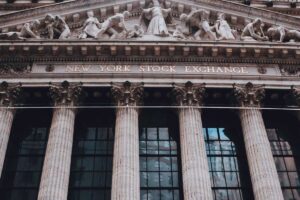What is a Self-Regulatory Organization?
A Self-Regulatory Organization (SRO) is a non-governmental entity that has the authority to create and enforce industry regulations and standards within a specific sector and the responsibility to regulate its own members to ensure fair, ethical, and efficient practices in its industry.
Self-Regulatory Organizations (SROs) exist in various sectors and industries. In some industries, SROs are comprised of industry participants who voluntarily choose to become members. SROs establish membership criteria and provide entities within the concerned industry sector with the option to join and adhere to the regulations and standards enforced by the organization.
However, there are cases where regulatory authorities mandate membership for entities operating in certain sectors. This implies that participation becomes compulsory for businesses within the industry to ensure adherence to regulatory standards and the preservation of market integrity. This is particularly true in the case of financial markets. SROs functioning in the financial markets include a diverse range of entities such as securities associations (e.g., FINRA), exchanges (e.g., NYSE), and clearing agencies (e.g., Depository Trust Company).
One of the most prominent SROs is the world is Financial Industry Regulatory Authority (FINRA) in the United States. It regulates brokerage firms and professionals, enforces rules designed to protect investors, and oversees securities trading in the country. FINRA also administers licensing exams for industry professionals.
Self-Regulatory Organizations (SROs) are authorized to create and enforce rules and regulations designed to ensure market integrity, protect investors, and maintain ethical standards. While they operate independently, they work in collaboration with government regulatory bodies to achieve these objectives.
SROs create and enforce rules and regulations governing the conduct and operations of their members. These rules cover a wide range of areas, including trading practices, market surveillance, membership requirements, and ethical standards.
Self-Regulatory Organizations (SROs) have a mandate to protect the interests of investors. They are responsible for monitoring their respective markets to detect and prevent market manipulation, fraud, and other activities that could harm market integrity. They use surveillance, audits, and investigations to ensure compliance with their rules.
SROs also have the authority to enforce their rules and regulations. This enforcement can involve disciplinary actions, fines, suspension, or expulsion of members who violate the rules.
Self-Regulatory Organizations in Securities Market
The prevalence and structure of SROs can vary by country. In many countries, financial markets and services are regulated by government agencies rather than traditional self-regulatory organizations (SROs). However, in the United States, the term self-regulatory organization is defined under the Securities Exchange Act of 1934, which grants the SEC the authority to designate certain entities as SROs.
While Self-Regulatory Organizations (SROs) operate independently, they collaborate with the SEC and are subject to SEC oversight. The SEC retains ultimate regulatory authority and may intervene or take enforcement action when necessary. The United States Congress and the Securities and Exchange Commission (SEC) periodically re-examine the SRO model to gauge the extent of their success in fulfilling their obligations.
National Association of Securities Dealers (NASD)
In the early 20th century, the securities industry faced challenges related to fraud, manipulation, and other unethical practices. To address these issues and promote fair and transparent markets, the industry recognized the need for self-regulation.
In 1939, the Securities Exchange Act of 1934 was amended to authorize the creation of self-regulatory organizations. In response to this regulatory framework, the NASD was formed to establish rules and regulations for its members and to enforce compliance.
The NASD had the authority to establish rules governing the conduct of its members and their representatives. It developed a rulebook that covered various aspects of the securities business, including sales practices, advertising, and record-keeping. The organization also had enforcement powers to discipline members for rule violations.
In 2007, the NASD merged with the regulatory arm of the New York Stock Exchange (NYSE Regulation) to form the Financial Industry Regulatory Authority (FINRA).
Municipal Securities Rulemaking Board (MSRB)
The Municipal Securities Rulemaking Board (MSRB) was created in response to the need for increased regulation and oversight of the municipal securities market in the United States.
The Securities Acts Amendments of 1975 amended the Securities Exchange Act of 1934 and included provisions for the regulation of the municipal securities market. The amendments acknowledged the distinct features of municipal securities and the need for a regulatory body to oversee this market.
The legislation empowered the U.S. Securities and Exchange Commission (SEC) to establish the MSRB as an independent, self-regulatory organization (SRO) with regulatory authority over broker-dealers and banks involved in the underwriting, trading, and sale of municipal securities.
The MSRB was created with a specific mission to protect investors, municipal entities, and the public interest by promoting a fair and efficient municipal securities market. Its functions include establishing rules for the conduct of municipal securities dealers and advising on market practices.
While the MSRB operates as an independent SRO, it works in close collaboration with the SEC. The SEC retains oversight authority, and the MSRB is subject to SEC approval of its rules and amendments.
Financial Industry Regulatory Authority (FINRA)
The National Association of Securities Dealers (NASD) and the regulatory arm of the New York Stock Exchange (NYSE Regulation) were two separate SROs overseeing the securities industry. Each had its own set of rules, enforcement mechanisms, and membership structures. Over time, there was a recognition that a more unified regulatory structure could enhance investor protection and market integrity.
In 2007, the NASD and NYSE Regulation merged to form the Financial Industry Regulatory Authority (FINRA). The merger was approved by the U.S. Securities and Exchange Commission (SEC) and aimed to create a single, consolidated SRO with regulatory authority over broker-dealers and their associated persons.
One of the key objectives of the merger was to develop a unified rulebook that would harmonize the rules and regulations governing broker-dealer activities. The formation of FINRA was guided by a commitment to enhance investor protection, maintain market integrity, and ensure fair and transparent financial markets.
FINRA regulates Broker-Dealer Firms, Capital Acquisition Brokers, and Funding Portals. As an SRO, FINRA operates under the oversight of the SEC. The SEC approves FINRA’s rules and monitors its regulatory activities to ensure they align with the broader regulatory framework.
In 2020, FINRA initiated 808 disciplinary actions against registered brokers and firms for unethical behavior, levied $57.0 million in fines, and ordered $25.2 million in restitution to harmed investors.
Purpose of Self-Regulatory Organizations
Self-Regulatory Organizations (SROs) serve several important purposes in the financial industry and stock market. Their primary goals are to maintain market integrity, protect investors, and ensure that financial markets operate efficiently.
Market Oversight: SROs are responsible for overseeing the activities of market participants, including broker-dealers, trading firms, and listed companies. They monitor trading practices, ensure compliance with market rules and regulations, and investigate potential market abuses.
Rulemaking and Enforcement: SROs create and enforce rules and regulations that govern the behavior of market participants. These rules cover various aspects of market activities, including trading practices, reporting requirements, and ethical standards.
Investor Protection: Self-Regulatory Organizations (SROs) play a crucial role in safeguarding the interests of investors. They set standards for transparency and fairness, ensuring that investors have access to accurate and timely information. SROs also provide mechanisms for addressing investor complaints and disputes.
Licensing and Qualification: Many SROs are responsible for licensing and regulating industry professionals, such as brokers and financial advisors. They establish qualification standards, administer licensing exams, and ensure that professionals meet the required educational and ethical standards.
Education and Training: SROs often provide educational resources and training programs to inform market participants about industry best practices, regulatory requirements, and changes in market rules.
Market Surveillance: SROs conduct market surveillance to detect irregularities and potential market manipulation. They use advanced technology and data analysis to monitor trading activities and identify unusual patterns or trading behaviors.
Market Development: SROs contribute to the development and evolution of financial markets, helping them adapt to changing industry needs and technological advancements.
Accountability: Self-Regulatory Organizations (SROs) are accountable to their members and the regulatory authorities overseeing their operations. They are responsible for monitoring compliance and addressing regulatory violations within their industry.
Governance: SROs typically have a governing body and committees responsible for decision-making. These governance structures include representation from industry participants, ensuring a collaborative approach to rulemaking and enforcement.
Major Self-Regulatory Organizations in the World
Self-Regulatory Organizations (SROs) play a crucial role in regulating various industries, but they are most commonly associated with the financial sector. Some of the major SROs in the world are:
1. Financial Industry Regulatory Authority (FINRA)
Based in the United States, FINRA is the largest Self-Regulatory Organization (SRO) and oversees the behavior of brokerage firms and professionals. It sets rules and standards for its members and conducts regulatory and market oversight.
2. Canadian Investment Regulatory Organization (CIRO)
Until 2023, the Investment Industry Regulatory Organization of Canada (IIROC) was the Self-Regulatory Organization (SRO) responsible for regulating investment dealers and trading activity in Canada. In 2023, IIROC merged with the Mutual Fund Dealers Association of Canada (MFDA) to form the Canadian Investment Regulatory Organization (CIRO).
CIRO oversees investment dealers, mutual fund dealers, and trading activities on Canada’s debt and equity marketplaces.
3. National Futures Association (NFA)
NFA is the SRO responsible for regulating the U.S. derivatives markets, including futures and options. It enforces compliance and ethical standards for professionals and firms involved in these markets.
Major Self-Regulatory Organizations in the United States
In the United States, several Self-Regulatory Organizations (SROs) oversee and regulate different aspects of the financial industry. Some of the major SROs in the United States are:
Securities Associations
- Financial Industry Regulatory Authority (FINRA)
- National Futures Association (NFA)
Securities Exchanges
- Cboe Exchange, Inc. (CBOE)
- The Nasdaq Stock Market LLC (NASDAQ)
- New York Stock Exchange LLC (NYSE)
- Miami International Securities Exchange, LLC (MIAX)
- CBOE Futures Exchange (CFE)
- Chicago Board of Trade (CBOT)
- Chicago Mercantile Exchange (CME)
Clearing Agencies
- The Depository Trust Company (DTC)
- Fixed Income Clearing Corporation (FICC)
- National Securities Clearing Corporation (NSCC)
- The Options Clearing Corporation (OCC)
Others
- Municipal Securities Rulemaking Board (MSRB)
Criticism against Self-Regulatory Organizations (SROs)
Conflicts of Interest: One of the primary criticisms is the potential for conflicts of interest within SROs. Since SROs are often industry-funded and operated by the very entities they regulate, there may be concerns about the independence of regulatory decisions. This dynamic could compromise the objectivity and effectiveness of regulatory oversight.
Capture by Industry Interests: Critics argue that SROs may be susceptible to regulatory capture, wherein the interests of the regulated industry influence or control the regulatory body. This could lead to lax enforcement, lenient regulations, or a failure to address emerging risks adequately.
Inadequate Investor Protection: Some critics contend that SROs may prioritize the interests of industry participants over investor protection. The focus on industry self-regulation may not always align with the goal of safeguarding the interests of investors, potentially leaving them vulnerable to misconduct.
Varied Standards and Enforcement: In a system with multiple SROs, there may be variations in regulatory standards and enforcement practices. This lack of uniformity could create regulatory arbitrage opportunities and make it challenging to maintain consistent market integrity.










